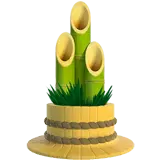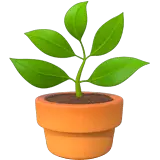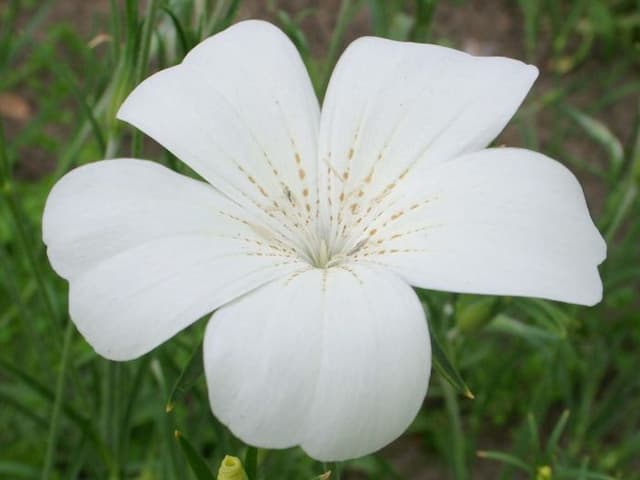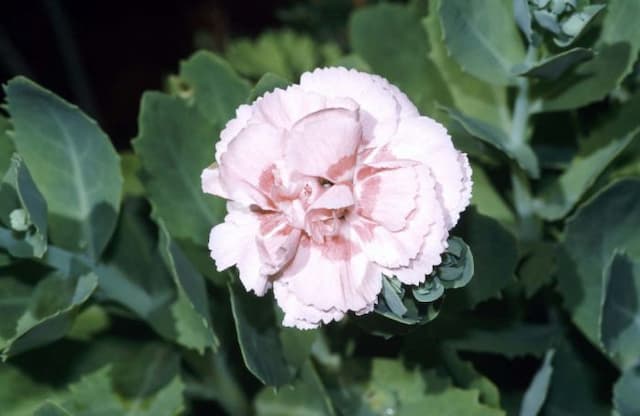Cheddar Pink Dianthus 'Devon Zane' (p)

ABOUT
Dianthus 'Devon Zane' is a charming plant known for its striking flowers and foliage. The blooms are particularly appealing, with a fringed or serrated edge, giving them a somewhat ruffled appearance. Typically, the flowers exhibit a rich array of colors, often in vibrant pink or red shades but can include other variations such as white or purple. Some might have a contrasting eye or center, which adds an extra layer of depth to their already captivating look. The petals can often have a subtle, spicy fragrance that is delightful upon a closer encounter. The leaves of Dianthus 'Devon Zane' provide a lovely backdrop to its showy flowers. They are slender and have a blue-green hue, which elegantly contrasts against the bright colors of the petals. The plant's overall shape tends to be compact and mounded, creating a neat and tidy appearance in the garden. During the blooming period, the plant becomes a focal point due to its vibrant and fragrant flowers, which not only add beauty to the landscape but can also attract butterflies and other pollinators. Its foliage remains attractive even when the plant is not in bloom, ensuring that Dianthus 'Devon Zane' contributes to the garden's aesthetic throughout the growing season.
About this plant
 Names
NamesFamily
Caryophyllaceae
Synonyms
Devon Cottage Pinball Wizard Pink, Zane Grey Pink
Common names
Dianthus 'Devon Zane'
 Toxicity
ToxicityTo humans
Dianthus, including the variety 'Devon Zane', is generally considered non-toxic to humans. There are no significant toxic effects expected from ingesting this plant. However, individuals with sensitive skin may experience minor irritation from handling the plant due to its saponin content.
To pets
Dianthus, also known as 'Pinks', is generally considered to be non-toxic to pets. It is not known to cause any serious symptoms of poisoning in animals if ingested. As with any non-food plant, ingestion in large quantities could potentially cause gastrointestinal upset, such as vomiting or diarrhea, due to the plant material's physical irritation of the stomach and intestines.
 Characteristics
CharacteristicsLife cycle
Perennials
Foliage type
Evergreen
Color of leaves
Blue-green
Flower color
Pink
Height
0.5-1 feet (15-30 cm)
Spread
0.5-1 feet (15-30 cm)
Plant type
Herb
Hardiness zones
5-9
Native area
Europe
Benefits
 General Benefits
General Benefits- Aesthetic appeal: Dianthus 'Devon Zane', commonly known as Pink, provides vibrant color with its pink to purple blooms that can enhance the beauty of any garden.
- Attracts pollinators: The flowers of the Pink can attract butterflies and bees, promoting biodiversity and aiding in the pollination of other plants.
- Low maintenance: Pinks are known for being hardy and easy to care for, making them suitable for gardeners of all levels.
- Long blooming period: Dianthus 'Devon Zane' blooms for an extended period from late spring to early fall, adding long-lasting color to the landscape.
- Drought resistance: Once established, these plants have good drought tolerance, requiring less watering and care.
- Compact growth: The Pink has a compact growth habit, making it a suitable choice for smaller gardens or as a border plant.
- Fragrance: Pinks are renowned for their sweet, clove-like fragrance which can be a delightful addition to the garden or when used as a cut flower indoors.
- Versatility: These plants can be used in a variety of garden settings, including borders, rock gardens, and containers.
 Medical Properties
Medical PropertiesThis plant is not used for medical purposes.
 Air-purifying Qualities
Air-purifying QualitiesThis plant is not specifically known for air purifying qualities.
 Other Uses
Other Uses- Dianthus 'Devon Zane', commonly known as Pink, can be used as a natural dye for fabrics and yarns, as its petals contain pigments that can impart a range of colors, particularly shades of pink and even some softer purple tones.
- Pinks can be incorporated into potpourri mixes, with their flowers offering a pleasant fragrance, which can be enhanced when dried and combined with other aromatic herbs and spices.
- The petals of Pinks can be used as a decorative edible garnish for salads, desserts, and cocktails, providing a splash of color and a subtle spicy flavor similar to cloves.
- Pinks can serve as a muse for artists and writers, with their vivid colors and intricate patterns often inspiring various forms of creative works, including paintings, poetry, and textile designs.
- Used in companion planting, Pinks can attract beneficial insects to the garden, such as pollinators and predatory insects that can help reduce pest populations on nearby vegetable and herb crops.
- The blooms of Pinks can be used as natural confetti for outdoor celebrations, offering a biodegradable and environmentally friendly alternative to synthetic confetti.
- Pinks can be pressed and included in handmade paper, adding texture and visual appeal to the final product.
- As a culturally significant flower, Pinks can play a role in traditional ceremonies and festivals, symbolizing love and affection in various societies.
- The plant can be used in sensory gardens for its texture and fragrance, providing an interactive experience, especially for those with visual impairments.
- Pinks can also be used in educational settings as a tool to teach children about plant biology, pollination, and the importance of biodiversity in gardens.
Interesting Facts
 Feng Shui
Feng ShuiThe plant name is not used in Feng Shui practice.
 Zodiac Sign Compitability
Zodiac Sign CompitabilityThe plant name is not used in astrology practice.
 Plant Symbolism
Plant Symbolism- Love: Dianthus has a long association with love, due to its heart-shaped flowers and long-lasting fragrance.
- Admiration: The vibrant and bold hues of Dianthus flowers represent deep admiration for someone.
- Boldness: Dianthus 'Devon Zane' has striking colors and a resilient nature, symbolizing boldness or daring.
- Purity: The pure, bright coloring of the flowers often denotes purity of emotion or intent.
- Affection: These flowers are frequently given as gifts to convey affection and deep personal sentiment.
- Chivalry: Due to Dianthus' historical connection with knighthood, it can symbolize chivalry and virtue.
- Divine love: In Christian symbolism, the Dianthus flower is sometimes associated with the Virgin Mary, representing pure or divine love.
 Water
WaterPinks, including Dianthus 'Devon Zane', prefer evenly moist soil, so it's important to water them when the top inch of soil feels dry. Generally, this plant should be watered about once a week with about one inch of water each time, but this can vary depending on the climate and weather conditions. During the growing season in spring and summer, watering frequency may increase due to higher temperatures and sunlight intensity. It is beneficial to water deeply and infrequently to encourage strong root growth rather than shallow, frequent watering. Always avoid overwatering as Pinks are susceptible to root rot.
 Light
LightFor optimal growth, Pinks require full sun conditions, which means they need to be placed in a spot where they receive at least six hours of direct sunlight daily. An area with morning sun and afternoon shade can also be suitable, especially in hotter climates where the intense afternoon sun might be stressed. Avoid placing them in overly shaded areas as this can inhibit flowering and lead to leggy growth.
 Temperature
TemperaturePinks thrive in temperatures that are on the cooler side, making them well-suited for moderate climates. They can generally tolerate temperatures down to about 40 degrees Fahrenheit but prefer a range between 60 and 70 degrees Fahrenheit for optimal growth. Although they can survive short periods of heat above 80 degrees Fahrenheit, prolonged exposure to high heat can stress the plants.
 Pruning
PruningPruning Pinks helps to maintain their compact shape and encourages a more prolific bloom. Deadheading, or the removal of spent flowers, should be done regularly throughout the blooming season to promote continuous flowers. A more thorough pruning can be done after the primary bloom to shape the plant and encourage a second bloom in the fall. Pruning is best performed in late winter or early spring before new growth starts.
 Cleaning
CleaningAs needed
 Soil
SoilCarnations prefer well-draining, loamy or sandy soil with a pH between 6.0 and 7.5. A mixture of one part garden soil, one part peat moss, and one part perlite or coarse sand is ideal to ensure good drainage and aeration.
 Repotting
RepottingCarnations should generally be repotted every 1-2 years. It's important to refresh their soil to ensure proper nutrients and to accommodate the growth of the plant.
 Humidity & Misting
Humidity & MistingCarnations thrive in moderate humidity conditions. The ideal humidity level for these plants is between 40% and 60%.
 Suitable locations
Suitable locationsIndoor
Place in bright indirect light and well-draining soil mix.
Outdoor
Plant in full sun with well-draining soil; avoid waterlogged areas.
Hardiness zone
3-9 USDA
 Life cycle
Life cycleThe Dianthus 'Devon Zane', commonly referred to as a type of Carnation or Pink, begins its life cycle as a seed, which germinates in warm, moist soil typically in spring. The seedling stage follows germination, where the plant develops true leaves and establishes a small root system. During the vegetative stage, Dianthus 'Devon Zane' experiences rapid growth, producing dense foliage and a robust root system in preparation for flowering. Flowering occurs when the plant reaches maturity, typically in late spring to early summer, showcasing its fragrant pink or red-hued flowers that are attractive to pollinators. Post pollination, seeds develop within the spent flowers, which eventually dry out and release seeds for the next generation. The plant may then enter a period of dormancy in winter, particularly in colder climates, before the cycle starts anew the following spring.
 Propogation
PropogationPropogation time
Spring-Early Summer
Dianthus 'Devon Zane', commonly known as Pink, is often propagated through the process of cuttings, which is a popular method for multiplying perennial Dianthus varieties. For best results, this should be done in late spring to early summer when the plant is actively growing. To propagate by cuttings, one should select healthy, non-flowering stems. A sharp, clean knife or secateurs are used to take cuttings of about 4 to 6 inches (10 to 15 centimeters) in length, cutting just below a node. The lower leaves are removed, and the cut end is often dipped in rooting hormone to encourage root development. The cuttings are then inserted into a well-draining soil mix, ensuring at least one node is buried where roots can form. It's important to keep the soil moist but not overly wet and to provide indirect light until roots have established, after which the new plants can be transplanted to their final location.








![Pink [Bubblegum]](/_next/image?url=https%3A%2F%2Fplants-admin.emdemapps.com%2Fimages%2Fplants%2F%2Fimages%2F604b596f31cbb.png&w=640&q=75)
